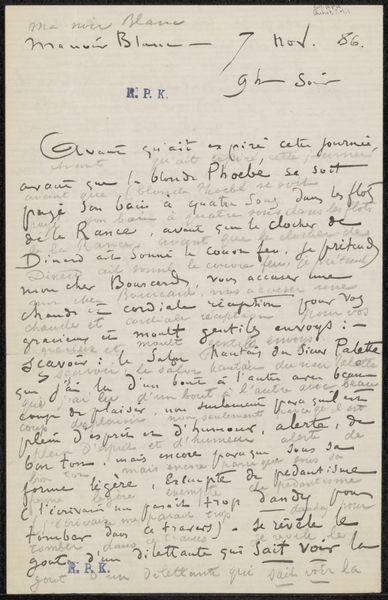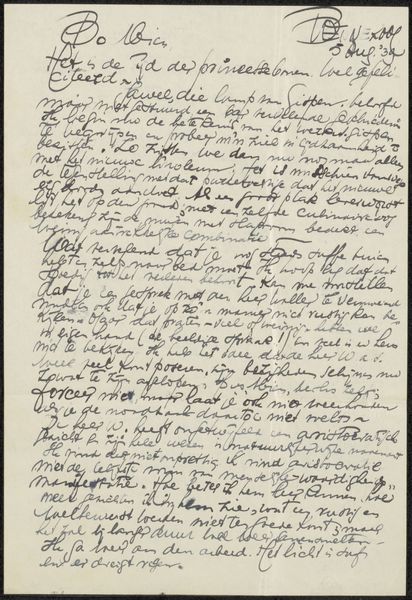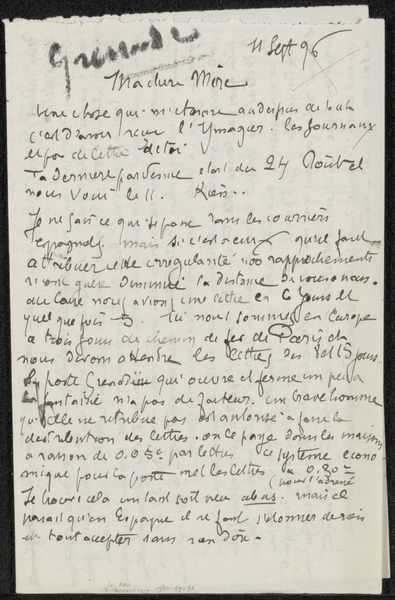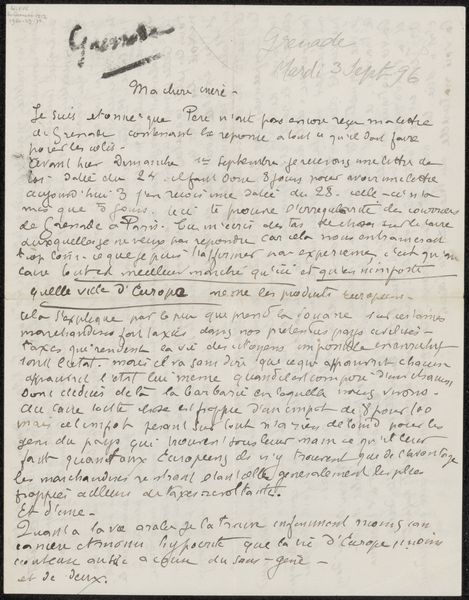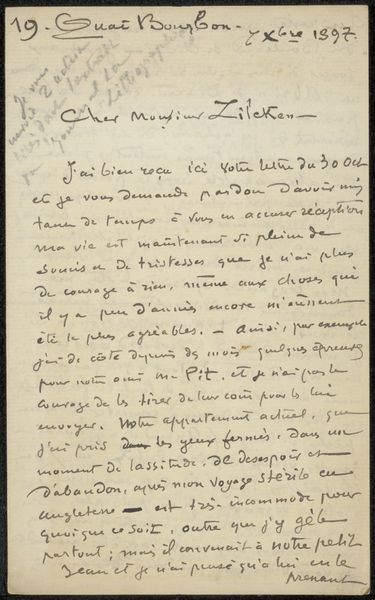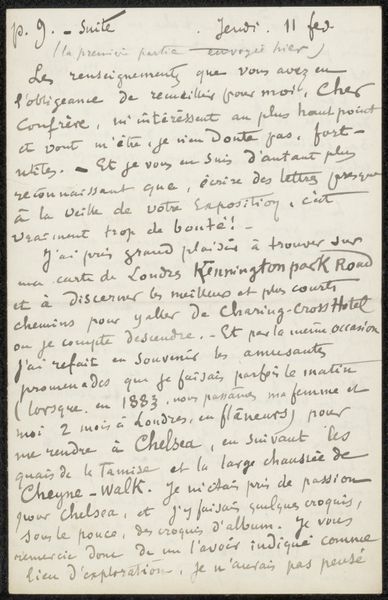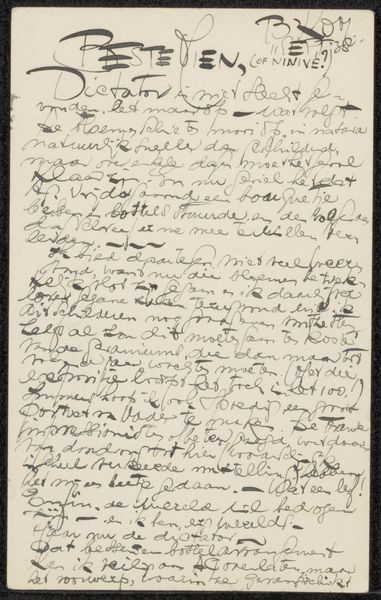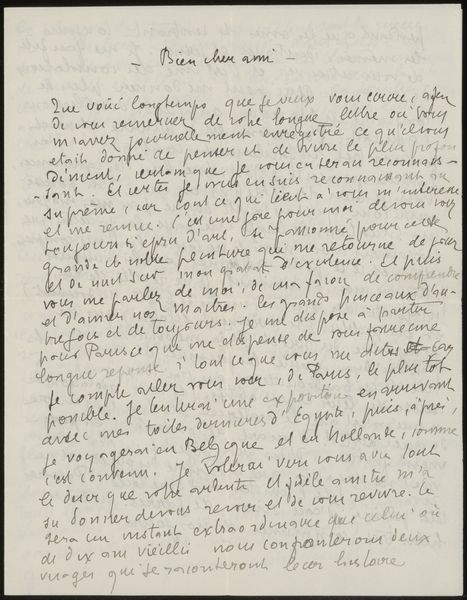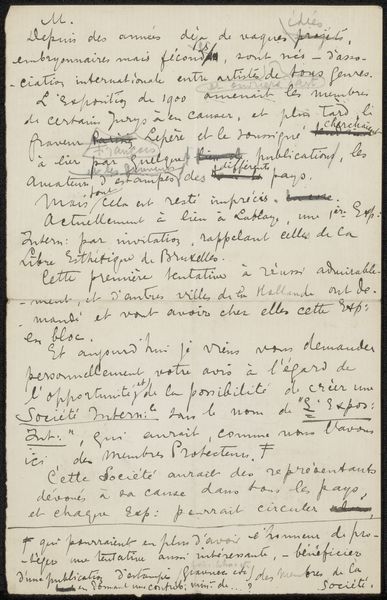
drawing, ink, pen, frottage
#
drawing
#
ink
#
pen-ink sketch
#
pen
#
frottage
Copyright: Rijks Museum: Open Domain
Curator: What strikes you first about this piece, labeled “Brief aan Philip Zilcken,” possibly from 1891-1894, by Félix Hilaire Buhot, held at the Rijksmuseum? Editor: It's intensely intimate. A handwritten letter rendered in pen and ink. I'm immediately drawn to the materiality – the absorbency of the paper, the character in each stroke of the pen. You can almost feel the writer's hand moving across the page. Curator: Precisely. And in that gesture, we find layers of meaning. As an iconographer, I'm drawn to the intimacy a letter holds. It's a direct conduit, carrying thoughts and feelings from one individual to another. Notice the density of script on the page and its almost chaotic quality—see the scrawled notations at the lower edges? Editor: Yes, the rapid, almost frenetic hand reminds us of the social and labor context that gave rise to the piece. This wasn’t casually dashed off—consider the type of pen, the quality of the ink, and the availability of paper. A whole infrastructure had to be in place. Curator: Right, it embodies the convergence of craftsmanship and correspondence. Bühot, known for his printmaking, often incorporated textual elements into his compositions. This letter can be interpreted as a kind of meta-commentary, merging personal communication with artistic expression. Editor: Also note the technique. It seems to be more than just ink. Isn't that frottage there, toward the right side of the script? A rubbing taken to transfer textures to the letter's page? The rough rubbing gives it a kind of visual noise which seems at odds with the private, one-to-one tone of a letter. Curator: Interesting observation. Frottage, indeed— it adds a layer of visual and tactile depth, underscoring Bühot's experimental approach to mark-making. And perhaps disrupting that conventional direct communication! Editor: It makes me ponder how such an everyday artifact tells us volumes about social relations, industrial capability and artistic license during the period. This "brief" seems to have so much breadth! Curator: Exactly. Through Buhot’s pen, we glimpse the intricate networks of communication and artistic experimentation flourishing at the close of the 19th century. It highlights the confluence of personhood and history in material forms. Editor: Well put, it makes one realize even a short handwritten correspondence encapsulates rich tales beyond the letter's simple information.
Comments
No comments
Be the first to comment and join the conversation on the ultimate creative platform.
